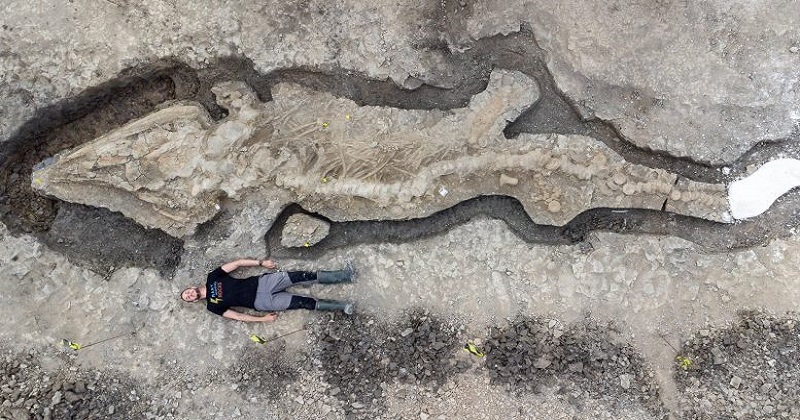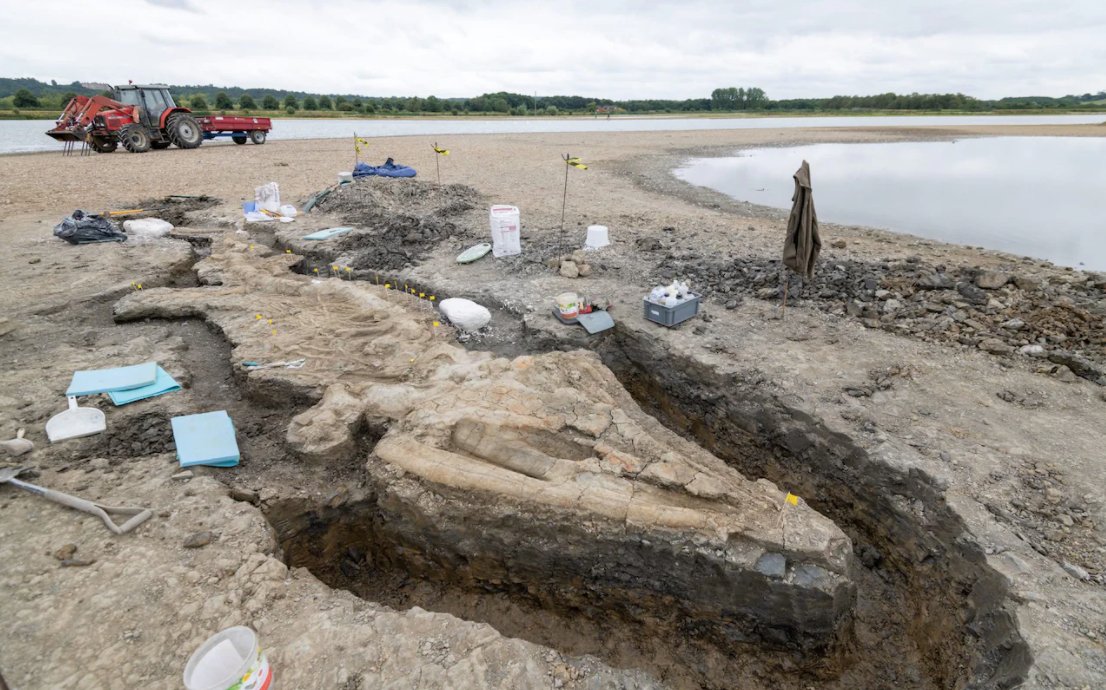
When workers unearthed a gigantic, 180 million-year-old ichthyosaur fossil at the bottom of the lake, what began as normal maintenance on a UK reservoir rapidly turned into a major paleontological dig. According to a news release from the Rutland Water Nature Reserve, the discovery was made in February during normal draining of a lagoon island slated for re-landscaping.
The Sea Dragon fossil is around 10 metres long and weighs about a tonne, making it the largest and most complete skeleton of its kind discovered in the United Kingdom to date. It may also be the first ichthyosaur of its species (Temnodontosaurus trigonodon) to be discovered in the United Kingdom.

‘It’s the most complete and larger than any dinosaur skeleton ever found here, so it’s a mega-find for so many reasons. During this time period, it would have been right at the top of the food chain. It’s an ultimate apex predator, perhaps one of the biggest animals in the sea worldwide’, palaeontologist Dean Lomax, who led the excavation said.
A pair of conservation team members observed what appeared to be pipes sticking up out of the muck and discovered the huge fossil. They realised they had unearthed biological stuff after additional examination and concluded it was most likely bones.
Also Read: Full 3D flexible OLED display created by US researchers
Ichthyosaurs originally appeared 250 million years ago and died out 90 million years later. The marine mammals range in length from one to 25 metres and have a body shape that is similar to that of dolphins. During the construction of Rutland Water in the 1970s, two partial and considerably smaller ichthyosaurs were discovered, but this is the first full skeleton. During the primary dig, researchers unearthed the vertebrae of numerous more ichthyosaurs. A team of skilled palaeontologists from throughout the United Kingdom uncovered the gigantic skeleton’s remains in August and September of last year.

Post Your Comments